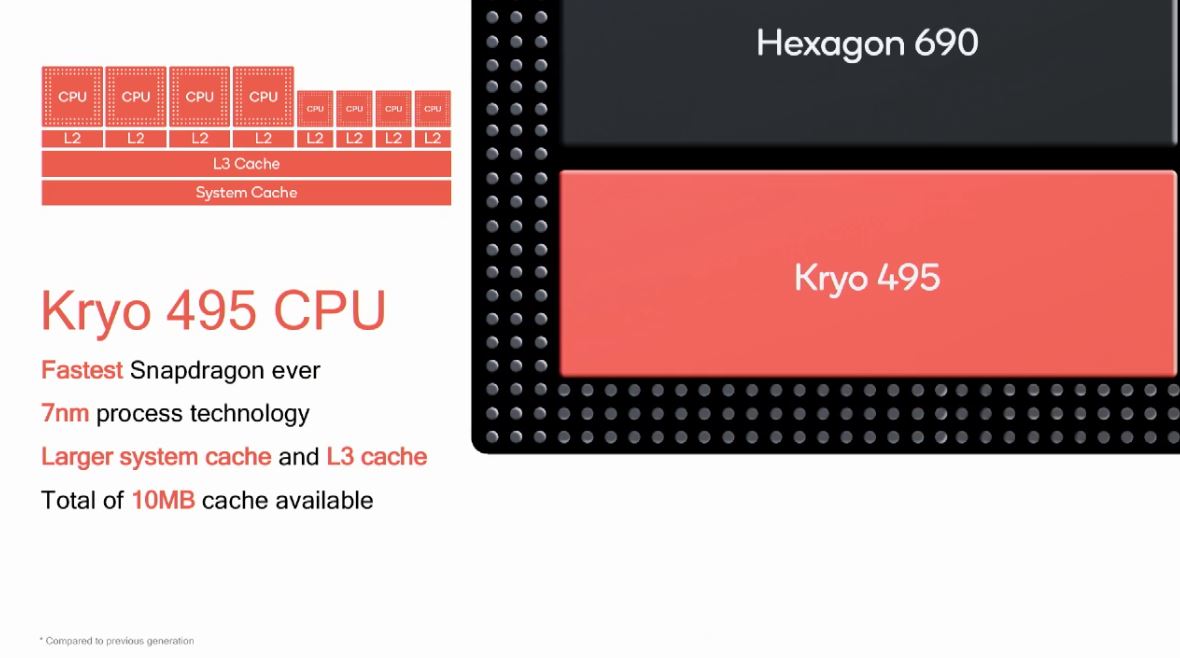Qualcomm Snapdragon 8cx PC Chips Challenge Intel Core i5
In the third day of the Snapdragon Technology Summit 2018, Qualcomm announced an Arm processor designed specifically with ultrathin notebooks in mind. The new “compute platform” called Snapdragon 8cx promises to take on Intel’s 15W mainstream Core i5 CPUs with similar computing and graphics performance but double the sustained peak performance and much better energy efficiency, battery life and thermal profiles, as well as LTE connectivity.
Designed for PCs
Qualcomm’s first attempts to enter the PC market may not have been too impressive, and that’s partially because Windows 10 was still not designed to properly take advantage of Arm chips, but also because Qualcomm was essentially re-using its smartphone chips (or “mobile computing platforms” as Qualcomm likes to call them now) as PC chips too. The issue with that strategy was that although those chips promised high efficiency and battery life, they didn’t hit that critical performance level for which most consumers are looking. This time, Qualcomm seems to have had a clear goal in mind, and that is to achieve (15W) Intel Core i5 levels of performance while still maintaining its Arm platform’s native advantages, such as multi-day battery life and up to 2Gbps LTE speeds.
Qualcomm Kryo 495
The Snapdragon 8cx compute platform features an eight-core Kryo 495 CPU. The exact configuration is not clear yet, but if Snapdragon 855 is any indication, it should also have four “little cores” and four “big cores.” It’s also not clear yet whether or not, like Snapdragon 855, the Kryo 495 CPU uses Cortex-A76 and A55 derivatives. We do know that it has 10MB of cache, which is more than double that of previous Snapdragon CPUs. This should allow for much faster multi-tasking, as multi-tasking performance has been an issue with Arm-based notebooks in the past.
Qualcomm claimed that although its Kryo 495 can “only” equal the peak performance of Intel’s 15W Core i5 CPU (assuming one of the latest generations), the chip’s real advantage is seen in sustained peak performance, which is double that of Intel’s Core i5 at 7W TDP. Qualcomm is not wrong to focus on sustained peak performance here. Over the past few years, Intel seems to have continued to increase peak performance for its Turbo Boost clock speeds but usually at the cost of sustained peak performance.
In other words, Intel’s chips may get to claim high peak performance in benchmarks, but in the real world you may find that the chips throttle to avoid overheating. Intel has been putting the blame on OEMs lately for not being capable of proper heat management for its chips. However, when most OEMs seem incapable of abiding by Intel’s performance specifications in their laptop designs, perhaps the fault lies with Intel chips' demands.
Adreno 680 GPU
If you thought the new Qualcomm CPU was impressive, the GPU will grab your attention too. Qualcomm claimed that its new Adreno 680 GPU is 3.5x faster than the GPU in the Snapdragon 835, its first platform for Windows 10 notebooks.
The Adreno 680 GPU is also twice as fast as the GPU in Snapdragon 850 and 60 percent more efficient. The company claimed it’s up to 50 percent more efficient than the competition’s GPU, too, while achieving similar performance.
Get Tom's Hardware's best news and in-depth reviews, straight to your inbox.
The GPU’s memory interface was upgraded from 64-bit to 128-bit. Qualcomm likely increased the number of GPU “cores” in it too, a change that would be enabled by the switch to the 7nm process node.
Other Snapdragon 8cx Features
The Snapdragon 8cx compute platform is the first to support Qualcomm’s Quick Charge 4+ fast charging technology. It also supports Hi-Fi audio, second-generation USB 3.1 over Type-C and up to two 4K resolution, HDR monitors. It will come integrated with Qualcomm’s X24 2Gbps LTE modem.
Snapdragon 8cx is also the company’s first chip to support Windows 10 Enterprise.
Lucian Armasu is a Contributing Writer for Tom's Hardware US. He covers software news and the issues surrounding privacy and security.



